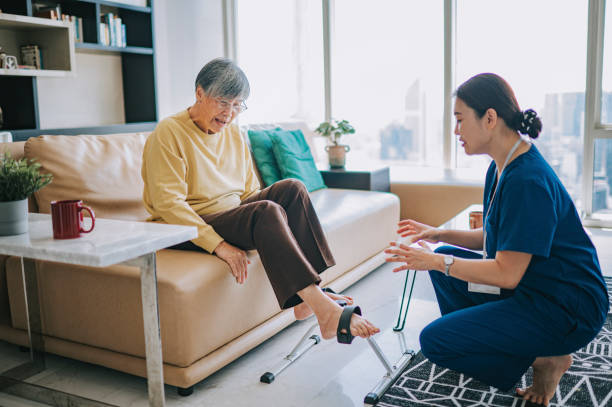Aging often brings unique challenges that can affect independence, mobility, and emotional well-being. For many seniors, occupational therapy (OT) becomes an essential part of maintaining dignity and quality of life. This specialized field of therapy is designed not only to restore physical function but also to empower older adults to remain engaged in their daily activities, hobbies, and communities.
Contents
- 1 Understanding Occupational Therapy for Seniors
- 2 Promoting Independence in Daily Living
- 3 Managing Age-Related Physical Challenges
- 4 Enhancing Cognitive and Emotional Health
- 5 Supporting Social Engagement and Community Life
- 6 Safety and Fall Prevention
- 7 Caregiver and Family Support
- 8 A Holistic Path to Aging Well
Understanding Occupational Therapy for Seniors
Occupational therapy focuses on helping individuals perform everyday tasks with greater ease and confidence. For seniors, this often means learning new strategies to adapt to age-related changes such as decreased mobility, joint pain, or memory decline. Therapists work with seniors to ensure they can continue dressing, cooking, bathing, or even gardening independently.
Unlike physical therapy, which emphasizes restoring physical strength and movement, occupational therapy takes a more holistic approach. It considers physical, cognitive, and emotional needs, ensuring seniors are supported in every aspect of their daily lives.
Promoting Independence in Daily Living
One of the main goals of occupational therapy is to preserve or restore independence. For seniors, losing the ability to manage basic tasks can lead to frustration, depression, and even early reliance on long-term care facilities.
Occupational therapists assess each senior’s unique environment and abilities, then recommend practical adjustments. This might include introducing adaptive tools such as grab bars in the bathroom, utensils with easy-grip handles, or dressing aids for those with arthritis. With these interventions, seniors can often regain the confidence to perform daily routines safely and effectively.
Managing Age-Related Physical Challenges

Aging brings a range of physical challenges—arthritis, stroke recovery, balance issues, and reduced muscle strength. Occupational therapy helps seniors cope with these conditions by teaching energy-conservation techniques, suggesting ergonomic equipment, and guiding safe exercise routines.
For example, a senior recovering from a stroke may work with an occupational therapist to relearn fine motor skills such as writing or buttoning a shirt. Seniors with chronic pain may benefit from joint protection techniques and pacing strategies that allow them to remain active without overexertion.
Enhancing Cognitive and Emotional Health
Cognitive decline, whether from mild memory loss or conditions like dementia, can make seniors feel disconnected or overwhelmed. Occupational therapy provides cognitive training, memory aids, and structured routines to help seniors stay engaged.
Equally important is the emotional aspect. Occupational therapists often introduce meaningful activities tailored to each senior’s interests—painting, puzzles, or music—that stimulate the mind and foster joy. This personalized support helps reduce feelings of isolation, anxiety, and depression, which are common in later life.
Supporting Social Engagement and Community Life
Beyond the walls of the home, occupational therapy also encourages seniors to remain connected to their communities. Social participation is a vital component of well-being, but mobility issues or fear of falling can cause seniors to withdraw.
Therapists work on mobility strategies, transportation planning, and adaptive equipment use so seniors can continue attending church services, social clubs, or family gatherings. Maintaining these connections enriches life and promotes a sense of belonging.
Safety and Fall Prevention
Falls are one of the greatest risks for seniors, often leading to hospitalization and long recovery periods. Occupational therapists specialize in home safety assessments, identifying hazards such as loose rugs, poor lighting, or cluttered walkways. They also train seniors in safe movement techniques and recommend supportive equipment like canes or walkers.
By reducing the risk of falls, occupational therapy not only prevents injury but also restores confidence. Seniors who feel secure in their environment are more likely to remain active and independent.
Caregiver and Family Support
Occupational therapy extends its benefits beyond the individual senior. Caregivers and family members often receive education on how to best support their loved one’s independence. This includes training in safe transfer techniques, guidance on creating supportive home environments, and strategies for managing stress as a caregiver.
By involving families, occupational therapy ensures that the senior’s needs are supported consistently, creating a healthier and more sustainable care environment.
A Holistic Path to Aging Well
At its core, occupational therapy is about more than physical recovery—it is about helping seniors age with dignity, purpose, and fulfillment. By addressing physical, cognitive, and emotional needs together, occupational therapy offers seniors a holistic path to a better quality of life.
It helps them rediscover independence, enjoy their passions, and remain connected to the people and activities they love. As more families recognize the value of OT, it is becoming an essential part of senior care and a key to living not just longer, but better.
